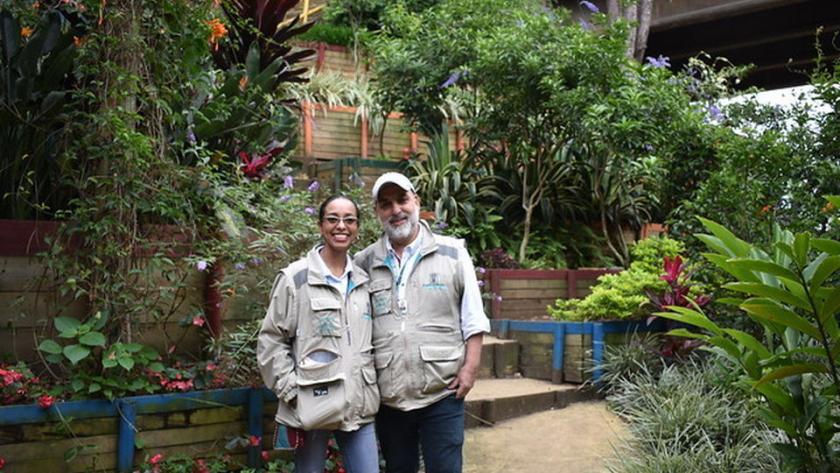Medellín shows how nature-based solutions can keep people and planet cool
Medellín, like many other cities, faces rising temperatures which keep the city warm long after the sun has gone down. This is how it’s learnt to adapt
T
his summer, as temperatures have soared across Europe, India, Egypt and many other places, the first reaction of those with access to cooling has often been to crank up the air conditioning.
While this brings short-term relief, it isn’t a feasible long-term solution on a warming planet. The increase in air conditioning, and other cooling, brings with it a huge surge in power demand. This, in turn, drives climate change and even higher temperatures.
But it doesn’t have to be that way, as Colombia’s second-largest city, Medellín, is showing by embracing nature-based solutions. Nature-based Solutions are defined by the International Union for Conservation of Nature as “actions to protect, sustainably manage, and restore natural or modified ecosystems, that address societal challenges effectively and adaptively, simultaneously providing human well-being and biodiversity benefits”.
Medellín, like many other cities, faces rising temperatures, worsened by the urban heat island effect—concrete and tarmac absorbing the sun’s power, radiating it out as heat and keeping the city warm long after the sun has gone down.
With the Green Corridor project, which won the 2019 Ashden Award for Cooling by Nature Award, supported by the Kigali Cooling Efficiency Program and in partnership with Sustainable Energy for All, Medellín’s city authorities transformed the verges of 18 roads and 12 waterways into a green paradise that reduces the impact of the heat island effect.
“When we made the decision to plant the 30 green corridors, we focused on areas which most lacked green spaces,” said Mayor Federico Gutiérrez. “With this intervention we have managed to reduce temperature by more than 2°C and already citizens feel it.”
“The Green Corridor project is an excellent example of how city planners and governments can use nature for smart urban design”, said Juan Bello, Head of UN Environment in Colombia. “Monitoring will be key to further demonstrate the multiple benefits of this approach over time.”
The effectiveness of this approach is well documented. Urban parks can reduce ambient daytime temperature by an average of approximately 1°C. Milan—which suffered power outages due to demand for air conditioning during the summer heatwave—is planning to plant three million trees by 2050 to reduce the heat island effect and increase air quality. Meanwhile, green roofs can cut energy use by 10 to 15 per cent. In cities such as Athens, there is evidence that they can reduce high cooling loads in buildings by 66 per cent.
“Medellín and many others are showing how we can both mitigate and adapt to climate change thanks to nature-based solutions,” said Martina Otto, Head of Cities Unit at UN Environment. “Cities will need to look hard at deploying such solutions if the world is serious about meeting the goals of the Paris Agreement.”
Emissions from the cooling sector are expected to rise 90 per cent over 2017 by 2050, when space cooling alone will consume as much electricity as China and India today.

“As global temperatures rise, keeping cool is becoming an increasingly urgent health issue, with cities particularly at risk” said Dan Hamza-Goodacre, Kigali Cooling Efficiency Program Executive Director. “Clever city planning can play a crucial role in providing cooling solutions such as green roofs and green corridors or higher standards of building design that enhance efficiency and passive cooling.”
Nature-based solutions are just one part of the mix, however. The Cool Coalition—which brings together governments, businesses, civil society and international organizations—takes a five-pronged approach to minimizing emissions from the sector.
The coalition works to avoid the need for active cooling through both nature-based solutions, and smart building and city design. It aims to shift cooling to renewable energy—such as through district cooling and solar-powered cold chains.
The coalition is also pushing to increase the efficiency of conventional cooling by taking advantage of the Kigali Amendment. It also seeks to protect vulnerable people from the effects of heat extremes and broken medical and agricultural cold chains, and leverage all possible cooperation.
It’s time for everyone else to join the coolest movement for the planet and make their own difference.
The ideas presented in this article aim to inspire adaptation action – they are the views of the author and do not necessarily reflect those of the Global Center on Adaptation.